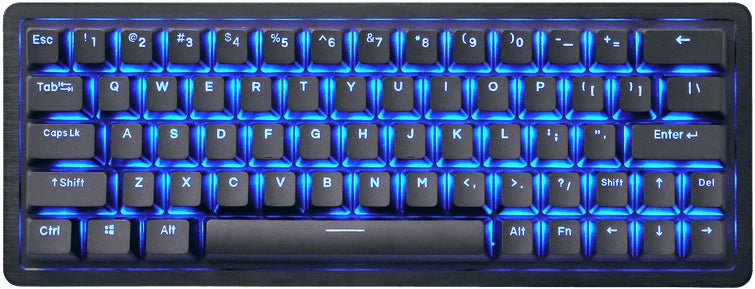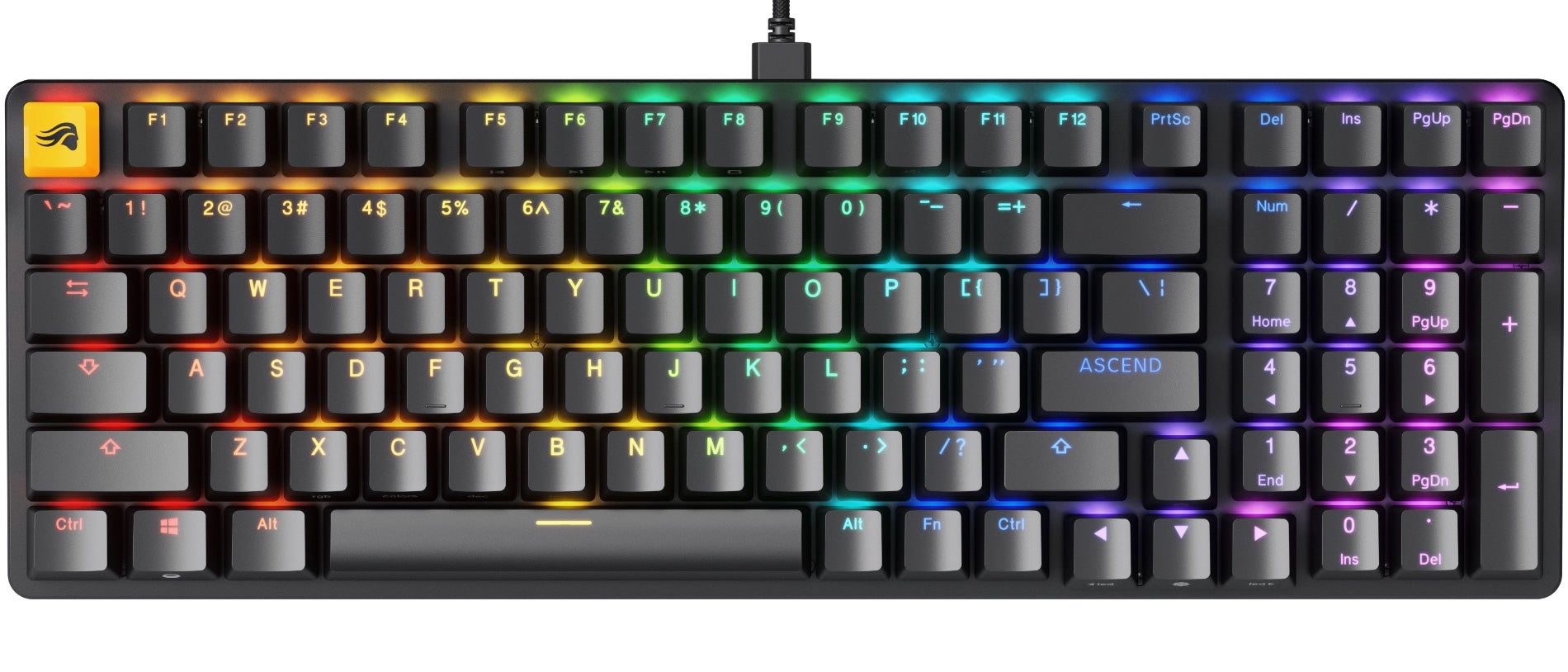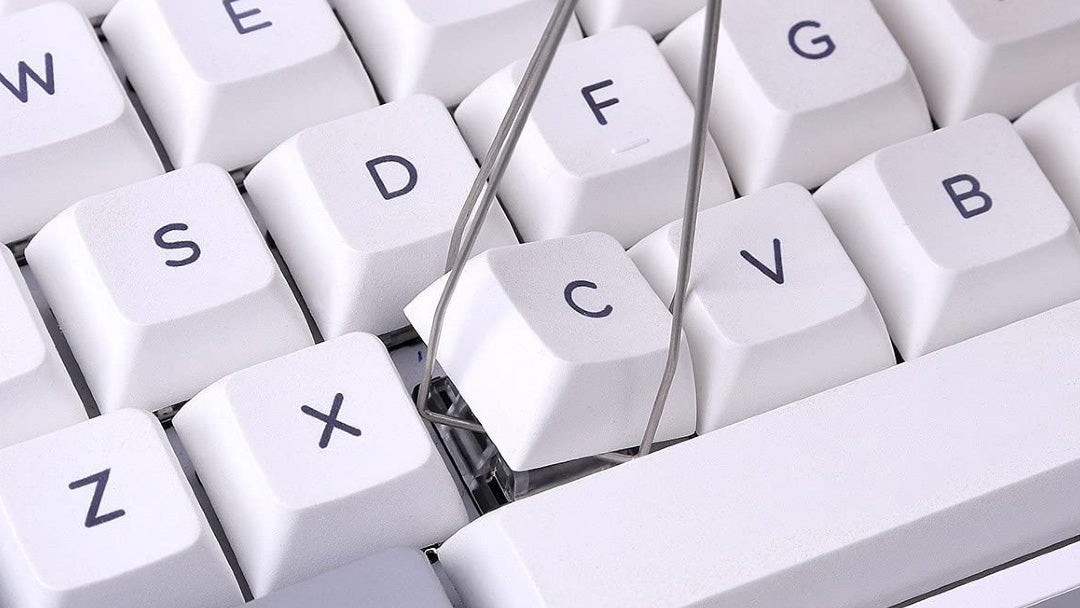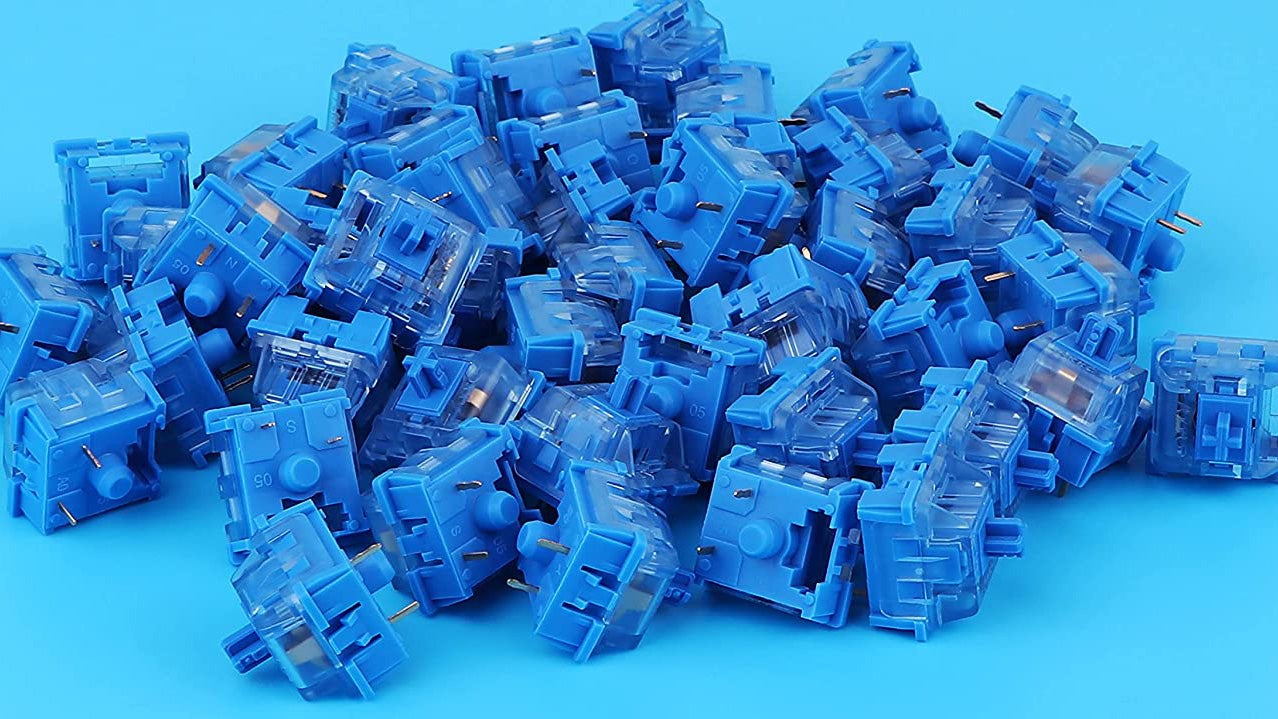Thanks to manufacturers like Royal Kludge, Redragon, and Akko, there are some really good keyboards and keyboard parts out there that allow you to create an entry-level custom mechanical keyboard for less than those pre-built gaming keyboards, which will likely be better than them as well. In this guide we’ll highlight some of the best budget mechanical keyboards that you can customise, and go through the easy and inexpensive customisations you can do to them to make your own mechanical keyboard that’s perfect for you.
Full-size: The traditional keyboard layout with around 104 to 108 keys, depending on region. Tenkeyless (TKL): Also known as an 80 per cent keyboard, this removes the number pad from the full-size layout. 75 percent: Probably the most popular size in the custom keyboard community, this form factor has no navigation and editing keys but keeps the function keys and arrow keys. 65 percent: The main typing keys, number keys, and the arrow keys. The function keys are accessed using different key combinations. 60 percent: The same as a 65 percent, but with one fewer column - so often no arrow keys.
For your first custom mechanical keyboard, we’d suggest buying the Redragon K552. It’s a hot-swappable tenkeyless form-factor wired keyboard with RGB that costs around £40/$40 and is often discounted too. It’s really popular in the custom keyboard world because of its low price, so we’d recommend it to anyone starting out. If you want a different form factor keyboard, Royal Kludge has a great range of keyboards with every available form-factor. Their keyboards also go on sale quite often, you can find a list of them in the UK in this article, and browse the RK range in the US here. Keychron are another great maker of good value hot-swappable mechanical keyboards. If you have a keycap set or switch in mind, you can save some time and money by getting a barebones keyboard kit. These come without switches and keycaps, so you don’t need to take anything off - you just plug in the switches and keycaps you’ve decided on. This is a little more expensive than buying a K552 or RK68 and modding it, but you have a wider range of modding options and the base level of quality is often higher. We’d recommend the 65 percent kit LK67, also known as a TM680. Glorious also makes a line of great DF-recommended barebones kits, with the most recent being the high-end GMMK Pro and more affordable GMMK 2. With these, just pull the keycap up off the switch using the wide end of the tool, wiggling from side to side as you do so. For the switches, use the smaller end and get the two teeth in-between the switch and the PCB to push in small tabs on the switch itself. Lean over the top with your arm above the switch and pull up with a good amount of force and the switch should pop out. Now you’re ready to add your custom switches and keycaps. The two main types of switch from Akko are Linear and Tactile. Linear switches are quieter and require less force to activate a response, whereas tactile switches require more of a press and have a louder more classic typing sound. Akko has so many switches, but there’s a great video from Consumer Tech Review that covers every Akko switch and how they sound. Below are some Akko switches which are on sale, watch the video and use the timestamps to see how they sound and which ones you like best. These switches come in packs of 45, so you’ll need to buy at least 2 to fully fill out your keyboard. Of course, there are plenty of other switches available from the likes of Gateron, Kailh and so on - just double-check the pin count to ensure they’ll be compatible with your board of choice. Before buying, make sure the layout of the keycaps matches the layout of your keyboard - and beware some older mechanical keyboards that have non standard bottom row layouts. Generally, US-style ‘ANSI’ keycap sets are more commonly available than UK/EU-style ‘ISO’ keycap sets, but some keycap sets will include extra keys to suit both layouts. This goes double for smaller keyboards, which often take more liberties with the layout and are therefore harder to find keycap sets for. Even the cheapest PBT keycaps are an upgrade over the standard ABS keycaps. Make sure you’re getting the right number of keycaps to match your keyboard, and that they’re the right layout; either UK or US. If your keyboard’s spacebar or tab key rattles a lot when you type, it’s likely because the stabilisers aren’t that well made and don’t fit tightly enough in the PCB. Luckily you can pop them out really easily and replace them with better ones that have a tighter fit. The best budget plate-mount stabilisers are Durock stabilisers, which cost around $15, and there are similar versions easy to get in the UK for around the same price. When you have removed the keycaps and switches from the keyboard and have an almost empty PCB, just press the small pins at the bottom of the stabilisers to pop them out of the PCB. Then just put the new ones in their place. They might be a bit hard to put in, just apply some gentle force to get them to snap into place. The more tight the fit the less room there is for them to rattle. You can do even more mods to your stabilisers by lubing them or tape-modding them, but we’ll keep it simple for now and it will be a good upgrade regardless.
Wrapping up
What’s great about this hobby is that you have full autonomy over what your keyboard uses and looks like. If you want to forgo changing the stabilisers and instead use that money to get better keycaps, then go ahead! There are more premium options for switches, keycaps, stabilisers, PCBs, so go and find what’s out there to suit your budget then use this guide with those pieces. If you’re not ready to do it all at once, you can do one mod now and another in a month or two. This should set you up nicely with your first custom mechanical keyboard. If you’re still on the fence about whether to customise a mechanical keyboard, read about why they’re worth using. Once you’re happy with your new keyboard, make sure it’s sitting on a desk pad from our best gaming mouse pads guide to make sure you’re hearing it properly.






